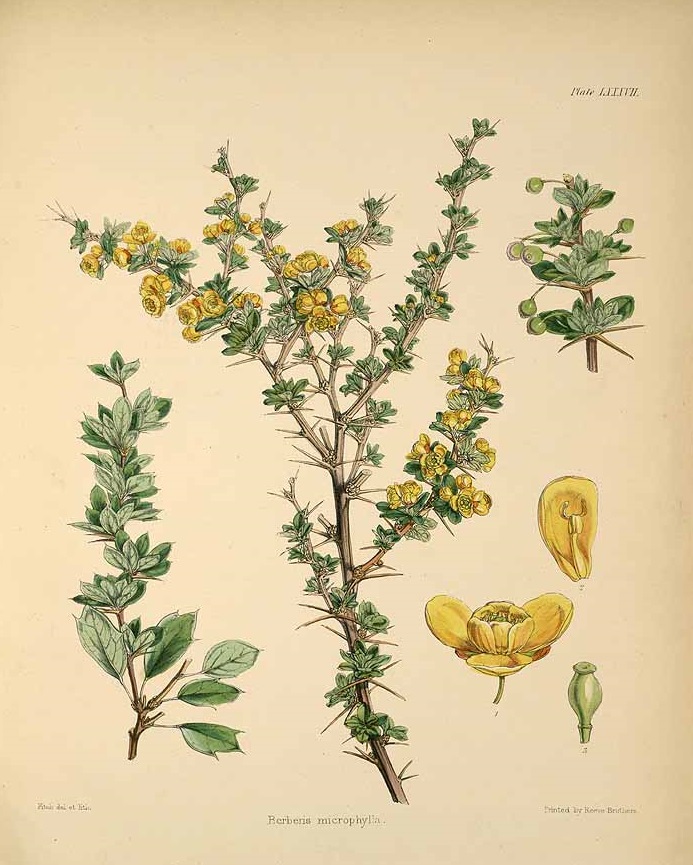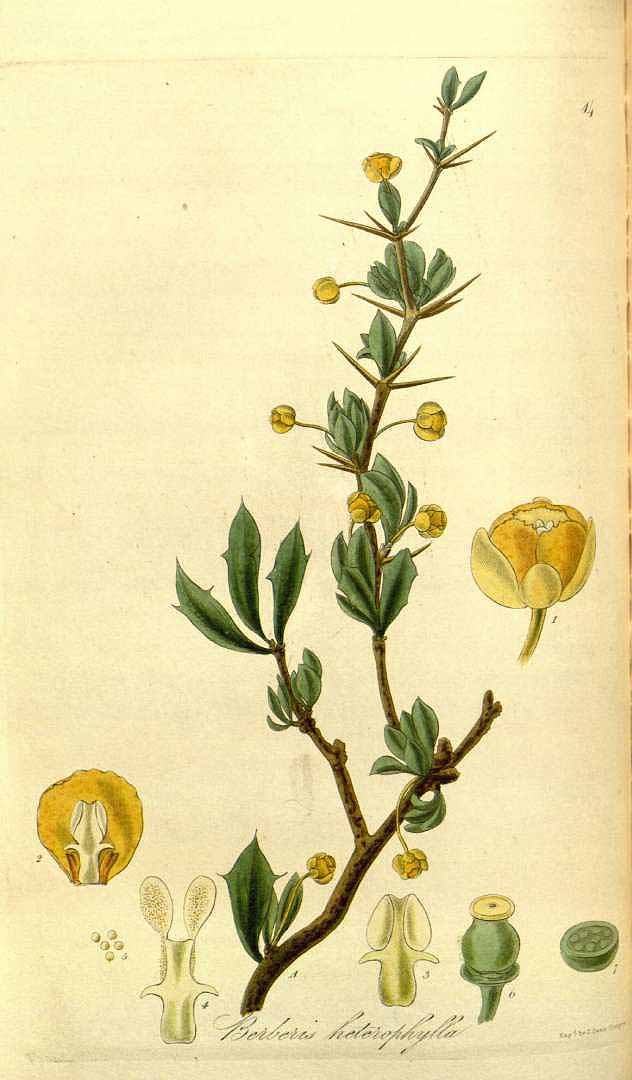! Nouveau site ici !
Vita > Plantae > Magnoliophyta > Magnoliopsida > Ranunculales > Berberidaceae > Berberis

 suivante
suivante

 suivante
suivante
![Illustration Berberis buxifolia, Par Paxton, J., Magazine of botany and register of flowering plants [J. Paxton] (1834-1849) Paxton?s Mag. Bot. vol. 10 (1843), via plantillustrations Illustration Berberis buxifolia, Par Paxton, J., Magazine of botany and register of flowering plants [J. Paxton] (1834-1849) Paxton?s Mag. Bot. vol. 10 (1843), via plantillustrations](../inc/images/illustrations/berberis_buxifolia3.jpg )
![Illustration Berberis buxifolia, Par Paxton, J., Magazine of botany and register of flowering plants [J. Paxton] (1834-1849) Paxton?s Mag. Bot. vol. 10 (1843), via plantillustrations - Fermer Illustration Berberis buxifolia, Par Paxton, J., Magazine of botany and register of flowering plants [J. Paxton] (1834-1849) Paxton?s Mag. Bot. vol. 10 (1843), via plantillustrations - Fermer](../../inc/images/illustrations/berberis_buxifolia3.jpg )


| Taux d'humidité | Énergie (kj) | Énergie (kcal) | Protéines (g) |
| / | / | / | / |
| Pro- vitamines A (µg) |
Vitamines C (mg) | Fer (mg) | Zinc (mg) |
| / | / | / | / |

